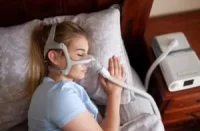A nasal spray device that seems to improve delivery of the hormone oxytocin to the brain may help those with psychiatric disorders such as autism, schizophrenia and bipolar disorder have improved social functioning, according to Norwegian researchers.
Scientists at the University of Oslo (UiO) collaborated with OptiNose on a test of the Norwegian firm’s eponymous device on a group of 16 males. Each member at some point received two different doses of oxytocin and also a placebo. Volunteers were also given an intravenous dose of oxytocin, for a comparison of the effects of the hormone in circulating blood.
Per Djupesland, OptiNose’s co-founder and chief scientific officer, told Reuters the device improves distribution of the medicine in higher parts of the nose considered important to reach the brain by utilising the user’s breath to propel medicine deep into the nasal cavity.
Those higher parts of the nose contain nerve fibers that can speed delivery of oxytocin into the central nervous system.
“To operate the device the patient inserts the device into the mouth and into one nostril,” he said. “The patient takes a deep breath, closes the lips around the mouthpiece and exhales into the device. Airflow carries the particles deep into the nose beyond the nasal valve. The nasal valve is this anterior narrowing of the nose positioned about two centimetres into the nose.”
As the user exhales into the device, their soft palate rises, preventing the medicine from being lost in the throat during delivery. This allows smaller doses to be used, and the potential for fewer side effects.
The device also expands the nasal cavity, which may further facilitate delivery. In fact, the research showed that individuals with larger nasal cavities had a stronger response to a low dose of oxytocin.
Other devices that deliver oxytocin have been used before, but Djupesland says they are unable to consistently deliver medicine high enough into the nose.
The traditional spray pumps tend to deliver most of the drug to the front of the nose, said Djupesland. With this device, he said, “due to its sealing nose piece, and the fact that you have an airflow which actually carries the particles and expands the nasal passages, you are able to get the drug higher into the nasal cavity, so you are able to reach a larger fraction of the nasal mucosa and also to get a higher fraction up to the upper part of the nose, which is essential to achieve nose to brain transport.”
UiO postdoctoral research fellow Daniel Quintana said oxytocin is known to influence social behaviour and has shown promise in the treatment of mental illness.
“Oxytocin is a neuropeptide which is produced in the brain and distributed within the brain, but also into the bloodstream via the pituitary gland,” he told Reuters. “A lot of mental illnesses are characterised by deficits in social function, such as autism and schizophrenia. But there aren’t any actual treatments that specifically target social dysfunction. So oxytocin has actually generated a lot of interest in its potential to treat social dysfunction.”
Oxytocin is a large molecule and has trouble crossing the blood-brain barrier. OptiNose says that administering it to patients through the nose offers a pathway to the brain that bypasses this barrier.
Quintana believes most researchers have a poor understanding of how oxytocin reaches and affects the brain and says little research has been done on the most effective dose for treatment. According to UiO Professor Ole Andreassen, very high doses could even have a negative effect on social behaviour.
In the tests volunteers were shown photographs of people making different facial expressions and asked to judge how angry or happy the person was.
“What we did in our experiment is that we presented people with pictures of faces,” said Quintana. “Some of these faces were angry, some of them were happy, and some of them had a neutral expression. And in our experiment we asked people to rate how angry or how happy these people were. In our experiment we found that people who were administered a low dose of intranasal oxytocin (with the OptiNose device) rated the neutral faces as less angry compared to when they were given the placebo spray.”
The research also showed that those who received oxytocin were more likely to look directly at a person they were talking, rather than avoid their gaze – a potential sign of social dysfunction.
According to Quintana, “prior research has found that a single dose of oxytocin administration improved gaze to the eye region. Now this is really important as most information when it comes to how others are thinking and feeling is transmitted through this eye region, so by improving gaze to the eye region you improve your ability to understand how others are thinking and feeling.”
Quintana is preparing to test a group of patients on the autism spectrum by giving them a low dose of oxytocin twice daily.
Djupesland, Andreassen, and Quintana’s study was published in peer-reviewed journal Translational Psychiatry in 2015.
About 1 percent of the world population has autism spectrum disorder, according to US-based public health institute Centers for Disease Control and Prevention. A similar proportion of the population is thought to suffer from schizophrenia.







